History of Kherson
Foundation of Kherson
People began to live on the territory of today’s Kherson in ancient times. Archeological finds confirm the presence of people here in the eras of copper and bronze (4-6 thousand years ago). On the site of the Kherson fortress, a Scythian burial of the 4th-3rd centuries BC was discovered.
From the middle of the 15th to the 18th centuries, this territory was under the control of the Crimean Khanate, which arose as a result of the collapse of the Golden Horde. In the 18th century, Russia intensified its efforts to gain access to the Black Sea. In 1737, during the Russian-Turkish war of 1735-1739, the fortification of Alexander-Schanz was built on the right bank of the Dnieper to protect the southern borders of the country. But several more decades passed before the Russian Empire fully established itself here.
After the Russian-Turkish war of 1768-1774, according to the Treaty of Kuchuk-Kainarji, the lands between the Dnieper and the Southern Bug became part of the Russian Empire. To protect them from possible attacks, it was necessary to build a new fortress, as well as a fleet. The dilapidated field fortification of Alexander-Schanz became such a place.
In the autumn of 1778, the construction of the fortress and the shipyard began. According to the order of Empress Catherine II, the town was named Kherson in honor of Chersonesus, a settlement founded by the ancient Greeks on the southwestern coast of Crimea about 2,500 years ago.
Kherson was destined to become the cradle and first base of the Black Sea Fleet of the Russian Empire, the economic and political center of the region. The founder of the town, and later its governor-general was the favorite of Empress Catherine II, the famous Russian statesman and military leader Prince Grigory Potemkin-Tauricheski.
More Historical Facts…
Kherson in the late 18th - 19th centuries
In 1783, the first large ship was launched from the stocks of the Kherson shipyard - a 66-gun “Glory of Catherine”, the first ship of the line of the Black Sea Fleet of the Russian Empire. The fortress was surrounded by earthen ramparts and a moat, which, if necessary, could be filled with water from the Dnieper. Inside the fortress, the Admiralty, an arsenal, a military cathedral, a mint, the Potemkin Palace, and a number of other structures were built. In 1784, Kherson became a county town.
At the end of the 18th century, Kherson played an important role in the development of internal and external economic relations in Russia. Through the port of Kherson, trade was carried out with France, Italy, Spain, and other European countries.
After the end of the Russian-Turkish war of 1787-1791, according to the Treaty of Jassy, the Black Sea coast from the Southern Bug to the Dniester River became part of Russia. After the founding of the Nikolaev shipyard in Nikolaev (Mykolaiv) in 1788 and Odessa in 1794, the importance of Kherson as a port and shipyard declined.
In 1803, Kherson became the center of the Kherson Governorate, which occupied a significant part of today’s south of Ukraine. The emblem and flag of Kherson were approved. Since 1861, after the abolition of serfdom in Russia, there was a significant economic growth in the town. In the second half of the 19th century, a theater and a library were built, archeological and natural history museums were opened. In 1897, there were about 59 thousand residents in Kherson (Russians - 47%, Jews - 29%, Ukrainians - 20%).
Kherson in the early 20th century
After deepening the Dnieper River, Kherson again became an important seaport. In 1907, the railway line connected Kherson with major cities of the Russian Empire. In 1908, the first town power station became operational.
In 1913, the cargo turnover of the Kherson port amounted to 1,114 thousand tons. In 1914, over 100 enterprises operated in Kherson (2 shipyards, 3 iron foundries, 4 large sawmills, 5 tanneries, a tobacco factory, 9 printing houses, 2 breweries, and a number of smaller enterprises), which employed 8.5 thousand workers. The population of Kherson exceeded 80 thousand people.
In the period from March 1917 to April 1920, the power in Kherson changed several times. After the Russian Civil War, Kherson became the center of the Kherson district of Nikolaev Oblast of the Ukrainian SSR. In 1925, 46,230 people lived in it.
The construction of the Dnieper hydroelectric power station and locks on the Dnieper significantly increased the importance of the Kherson port, especially after the creation of a continuous water communication from Kherson to the upper reaches of the Dnieper.
During the industrialization of the USSR (1929-1941), the city turned into a major industrial center of the Black Sea region. At that time, a shipbuilding plant, one of the largest elevators in the USSR, a cannery, a motor plant, an oil refinery, an electric machine building plant, and a confectionery factory were built. In 1939, the population of Kherson was about 98,000 people.
Kherson during and after the Second World War
During the Second World War, after the German attack on the USSR, the main enterprises of Kherson (oil refinery, agricultural engineering and ship repair plants) were evacuated to the east of the country. Also, about 130 thousand people were evacuated to the left bank of the Dnieper. On August 19, 1941, German troops occupied Kherson. On March 13, 1944, Kherson was liberated by the Red Army.
During the occupation, about 17 thousand local residents and 40 thousand prisoners of war were killed in Kherson, 15 thousand were taken to Germany for forced labor. 18,900 residents of the city were drafted into the Red Army and participated in the war; 7,598 of them were killed in action.
On the day of the liberation of Kherson, the All-Union Radio announcer Yuri Levitan read out the operational report of the Soviet Information Bureau. In it, Kherson was mentioned as a regional center, which was not true; it was a district center of the Nikolaev region. Stalin found out about this and, so that this message would not become disinformation, he said something like this: “You say there is no Kherson region? There will be.”
On March 30, 1944, a separate Kherson region was founded with a regional center in Kherson. It consisted of 13 districts of the Nikolaev region and 6 districts of the Zaporozhye region. In 1944-1950, Kherson was rebuilt. In 1959, the population of Kherson was about 158 thousand people. Over the next 20 years, the city’s population doubled.
In the postwar years, Kherson turned into a major industrial, agricultural, and cultural center in the south of the Ukrainian SSR. Kherson Shipbuilding Plant became the main shipyard of the USSR. In 1977-1985, the Antonovsky automobile bridge was built across the Dnieper, connecting the city with the left bank of the Dnieper and Crimea. As of 1985, the basis of the city’s economy was shipbuilding, mechanical engineering, oil refining, building materials industry, light industry, and food industry.
After the collapse of the USSR, Kherson quite successfully survived the economic and social crisis. The restructuring of large Kherson enterprises was carried out. The shipbuilding plant received a lot of orders from abroad and investors from Russia and Kazakhstan came to the local oil refinery.
From 1989 to 2020, the population of Kherson decreased by about 20%, from 355 to 282 thousand people. Since May 17, 2014, the representative office of the President of Ukraine in the Autonomous Republic of Crimea has been located in Kherson.
Kherson streets
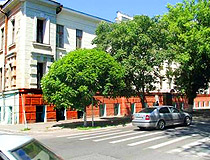
Summer in Kherson
Author: Puzin V.N.
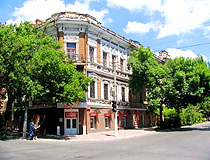
Kherson architecture
Author: Puzin V.N.
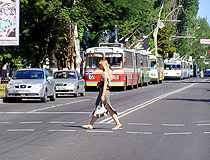
Street traffic in Kherson
Author: Leonid Yaitsky
Kherson - Features
Kherson is a cozy and compact city, one of the greenest in the south of Ukraine, the only seaport on the Dnieper River. It is located on the right, high bank of the Dnieper, in the most picturesque part of the river, its delta. The City Day of Kherson is celebrated on the third Saturday of September.
The coat of arms of Kherson depicts the gates of the Kherson fortress and crossed commercial and military anchors (the cradle of the Black Sea Fleet and an important center of shipbuilding).
The climate of Kherson is typical for the climate of the steppe south of Ukraine, and is dry-steppe continental. Winter is mild, with little or no snow. Spring comes early, usually already at the end of February. Summer is hot, dry and long. Autumn usually comes in October and lasts until December. The average temperature in January is minus 1.7 degrees Celsius, in July - plus 22.9 degrees Celsius.
The main industries of Kherson are mechanical engineering and metalworking, fuel, light, processing and food industries, glass production and the chemical industry. Tourism is also developed. In total, there are about 180 resort complexes in the Kherson region. Kherson is famous for its watermelons, which have long become a kind of brand of this region of Ukraine due to their excellent taste.
Kherson Shipbuilding Plant is one of the largest shipbuilding enterprises in Ukraine and Europe. Its production facilities allow building tankers, bulk carriers, container ships, icebreakers, arctic supply ships, drilling rigs, and various multi-purpose ships.
Kherson is an important transport center with sea and river ports, railway station, airport (regular flights to Kyiv, Istanbul, Krakow). Public transport is represented by mini-buses and trolleybuses. According to the 2001 Ukrainian census, Ukrainians made up 76.4% of the city’s population, Russians - 20.0%.
Main Attractions of Kherson
Cathedral of St. Catherine (1781-1786) - the first Orthodox church in Kherson, the tomb of Prince Grigory Potemkin-Tauricheski, the founder of Kherson. An outstanding architectural monument, part of the ensemble of surviving structures of the Kherson fortress, it is built of pale yellow Ingulets limestone in the style of Russian classicism. Perekopska Street, 13.
Kherson Fortress Park. In the past, there was a powerful fortification complex, inside of which there was a square with the Potemkin’s Palace and the Cathedral of St. Catherine. It occupied an area of about 100 hectares and was surrounded on all sides by earthen ramparts, bastions and a deep moat. There were about 220 guns on the bastions.
The building of the fortress arsenal, the powder magazine converted into a restaurant, identical Moscow and Ochakov gates, as well as several fragments of the rampart have survived to this day. On the territory of the park there is a Ferris wheel, which offers an excellent view of the Dnieper River.
Monument to the First Shipmen - the most recognizable symbol of Kherson, which has been decorating the city embankment since 1972. The monument was erected on the site of the shipyard, where the construction of the first ships of the Black Sea Fleet had been carried out. The monument, reaching a height of 15 meters, is made in the form of a three-masted sailboat. On the side of the lower part of the pedestal, craftsmen, soldiers and officers are depicted during the construction of ships at the end of the 18th century. On the other side, there are images of today’s Kherson shipbuilders.
The front side of the pedestal is decorated with an inscription that reads: “Here in 1783 the first 66-gun ship of the Black Sea Fleet “Glory of Catherine” was built.” On the back side of the pedestal it is written: “in this convenient place for sea and land communications, we command to build a fortress and a shipyard… call this place Kherson. /St. Petersburg 1778/.” Ushakova Avenue, 137.
Glory Park. To the southeast of the Cathedral of St. Catherine you can find the Memorial Park of Glory dedicated to the heroes of the Second World War, who liberated Kherson. This is one of the most beautiful corners of Kherson. The central alley of the park descends to the Dnieper River, and the view here is simply amazing.
Ushakova Avenue - the central street of Kherson connecting the bank of the Dnieper River with the railway station and bearing the name of Admiral Fyodor Ushakov. The monument to Ushakov is installed near the main building of the Kherson State Maritime Academy. There are a lot of interesting old buildings and shopping centers on this street. An interesting fact is that not a single street crosses Ushakova Avenue - they all originate from it.
Also on this street you can see the Monument of John Howard, the famous English medical doctor, philanthropist and humanist, who arrived in Kherson in 1789 and remained forever in the memory of many local residents. Here he provided free medical care. According to his will, a sundial made of gilded copper, a symbol of eternity, was installed on the monument, and an inscription in Latin “Ad sepulchrum stans quidquid est amici” was carved, which means: “Whoever you are, here your friend lies.” Ushakova Avenue, 50.
Kherson Regional Museum - the largest museum in Kherson and one of the best museums in southern Ukraine, opened in 1890 and located in a historic building of the 19th century. Here you can see a collection of ancient coins of the states of the Northern Black Sea region, treasures from Scythian burial mounds, a collection of cold and firearms of the 16th-20th centuries, a collection of vintage furniture.
A separate exposition is devoted to the founding of Kherson. The department of flora and fauna presents a diverse collection representing the flora and fauna of the lower Dnieper region, the areas of the Black and Azov Seas. Soborna Street, 9.
Kherson Regional Art Museum. This museum is located in a beautiful building, which is an architectural monument of the early 20th century. It is named after Oleksii Shovkunenko (1884-1974), a Ukrainian painter. The art collection of this museum has over 10 thousand exhibits and is one of the most interesting museum collections in Ukraine.
The exposition presents works of Ukrainian and foreign painting, graphics, sculpture, arts and crafts, starting with examples of Russian icon painting of the 17th century and up to the works of contemporary Kherson artists. Soborna Street, 34.
Greek-Sophia Church (1780) - the oldest church in Kherson constructed in the form of a basilica, an architectural monument of national importance. Initially, services in this church were held in Greek. In 1808, it was turned into an Orthodox church of the Nativity of the Virgin. The carved ebony iconostasis, made in the style of the Italian Renaissance, deserves special attention. Bohorodytska Street, 11.
Goldenberg’s House (1910) - one of the most beautiful buildings in Kherson formerly owned by the merchant I. Goldenberg. The house was built in eclectic style luxuriously decorated in Romanesque and Moorish styles. Staroobriadnytska Street, 21.


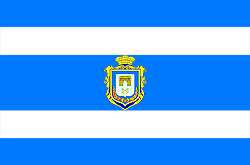
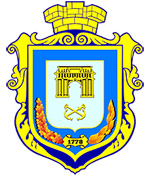



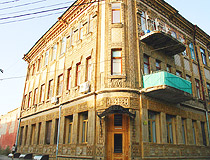
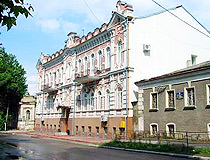
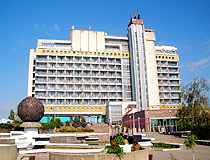
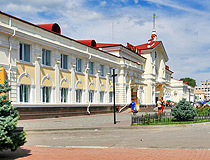
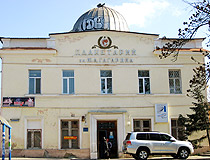
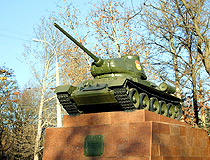
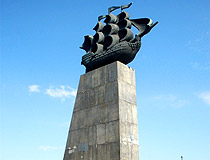
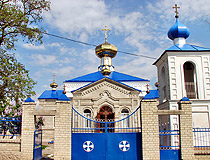
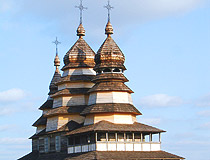
The comments of our visitors